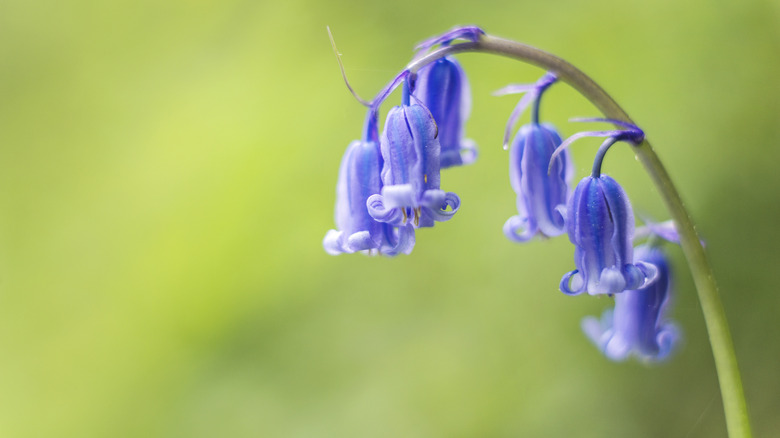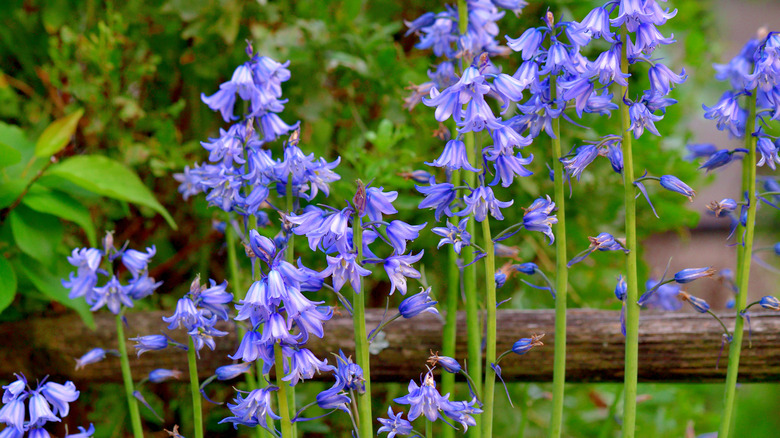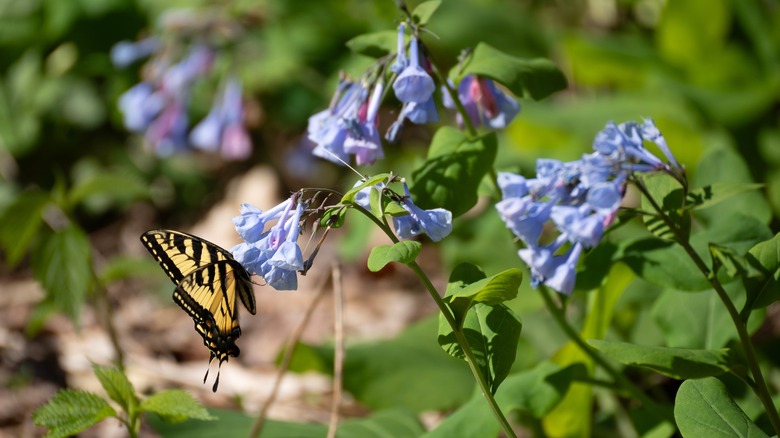Native Vs Invasive Bluebell Flowers: Here's How To Tell The Difference
Bluebells are perennials that thrive between harsh winters and warm summers. They are a beautiful spring flower that will inspire any gardener. Their trumpet-shaped flowers invite pollinators of all kinds, like birds, bees, and butterflies. Most bluebell varieties keep close to the ground, providing a gorgeous ground cover in the springtime. Their short lifespan provides room for other growing annuals that will last all summer. If used in a mixed bed or around garden borders, you can create a stunning, blooming garden well into autumn. Since bluebells are early bloomers, they are a great option for gardeners who like to start early in the year with landscape and garden cultivation.
While most bluebell varieties make a lovely addition to gardens and landscapes, there is one flower you'll wish you never planted. Depending on where you live, the Spanish bluebell (Hyacinthoides hispanica) could take over root systems and invade the natural habitat of other plants. Luckily, it's easy to spot this variety of bluebell with its broader leaves, upright stems, and flower clusters compared to other native varieties that feature the iconic drooping stems with flowers that fall to one side.
The most notorious invasive bluebell
Though the Spanish bluebell is found in the wild in several U.S. states, particularly Delaware, Virginia, and North Carolina, this perennial is native to Spain, Portugal, and northwest Africa. Spanish bluebells have been found invading the natural habitats of other plants, even causing less reproduction of other bluebell species through excess cross-pollination. By producing and distributing a large number of seeds, the Spanish bluebell uses its aggressive root system to destroy surrounding plants.
Since this variety is so aggressive, it is more likely to escape your garden and invade surrounding areas. This can have a major impact on your local ecosystem. When buying seeds or planting new bluebells, be mindful of which ones are safe for your area. To keep your garden and local ecosystem healthy, avoid planting Spanish bluebells and consider growing the following bluebell species instead.
Types of native bluebells to plant instead
When planting bluebells, it's important to stick with your native species. One of the most widely known bluebells in the U.S. is the Virginia bluebell (Mertensia virginica). The delicate, light blue petals of Virginia bluebells are a favorite of American home gardeners and horticulturists. Also known as eastern bluebells, Roanoke-bells, Virginia cowslip, and lungwort oysterleaf, this variety is a seasonally recurring plant perfect for attracting pollinators – many gardeners will see hummingbirds flock to their yards after planting Virginia bluebells.
Many native bluebells bloom May through August, with the exception of some early bloomers like Virginia bluebells that start in March and the Rocky Mountain bluebell that starts peeking out in early April. States like California, Arizona, and Wyoming enjoy multiple varieties of native bluebells, like Alpine, Aspen, and tall fringe bluebells. Regardless of which native species you choose to plant, bluebells grow best with other spring perennials like daffodils and trillium or can be layered in border beds with hostas and ferns. Consider adding native bluebells to your garden for an increase in pollinator and wildlife activity, and get inspired by these lovely blue blooms carpeting your landscape.


